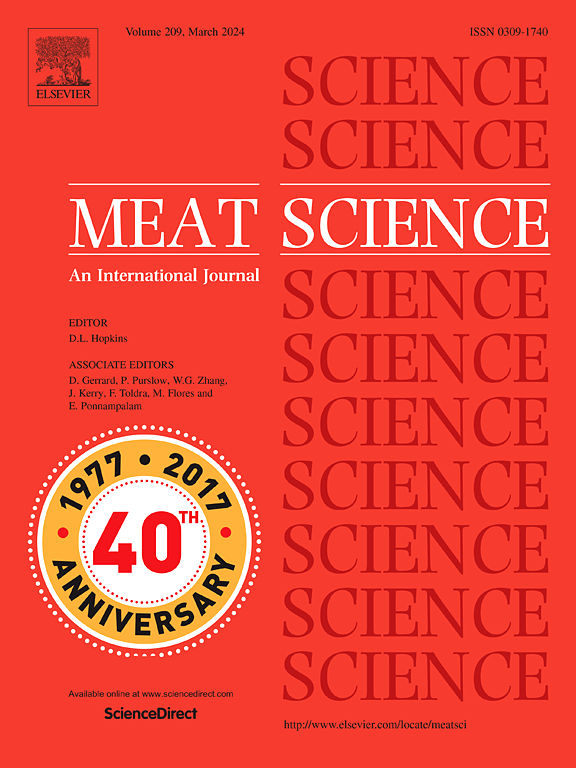Evaluation and reinforcement of the physicochemical properties of hybrid meatball kung-wan partially replaced with rice protein
IF 6.1
1区 农林科学
Q1 Agricultural and Biological Sciences
引用次数: 0
Abstract
Hybrid meat products, involving the partial replacement of meat with plant proteins, provide a promising solution to address the rising consumer demand for sustainable and healthier food options. Rice protein (RP), featuring balanced amino acid composition and hypoallergenic property, represents a potent alternative to common legume-based proteins. This study investigates the potential of RP as a partial replacer for pork in kung-wan, a traditional Oriental-style emulsified meatball. RP was incorporated at substitution levels of 10 %, 20 %, and 30 %, and its influence on physicochemical properties, microstructures, and sensory attributes were evaluated. Increasing RP proportion led to reduced emulsion stability, cooking yield, and texture, with significant changes observed at levels above 20 %. Additionally, microstructural analysis revealed that RP substitution caused fat globule agglomeration and transformed the protein matrix from fine-stranded filaments into amorphous aggregates. Moreover, sensory evaluation indicated that a 10 % substitution preserved consumer preference, whereas higher levels caused noticeable declines in hardness and overall acceptability. Furthermore, transglutaminase (TGase) treatment enhanced the cohesiveness of the protein network in RP-hybrid kung-wan at the 20 % substitution level, restoring the texture attributes and sensory qualities to levels comparable to those of the full-meat counterpart. This study highlights the feasibility of RP in hybrid meat products and unveils the role of TGase in facilitating higher substitution levels without compromising products quality.
水稻蛋白部分替代杂交种贡丸理化性质的评价与强化
混合肉制品,包括用植物蛋白部分替代肉类,提供了一个有希望的解决方案,以满足消费者对可持续和更健康的食品选择日益增长的需求。大米蛋白(RP)具有均衡的氨基酸组成和低致敏性,是常见豆类蛋白的有力替代品。本研究探讨RP在传统东方乳化肉丸(kung-wan)中部分替代猪肉的潜力。RP在10%、20%和30%的取代水平下加入,并评估其对物理化学性质、微观结构和感官属性的影响。RP比例的增加导致乳液稳定性、蒸煮得率和质地的降低,当RP比例超过20%时,观察到显著的变化。此外,微观结构分析表明,RP取代导致脂肪球团聚,并将蛋白质基质从细链细丝转化为无定形聚集体。此外,感官评价表明,10%的替代保留了消费者的偏好,而更高的水平导致硬度和总体可接受性明显下降。此外,转谷氨酰胺酶(TGase)处理在20%替代水平上增强了RP-hybrid kung-wan蛋白质网络的内聚性,使其质地属性和感官品质恢复到与全肉相当的水平。这项研究强调了RP在杂交肉制品中的可行性,并揭示了TGase在促进更高替代水平而不影响产品质量方面的作用。
本文章由计算机程序翻译,如有差异,请以英文原文为准。
求助全文
约1分钟内获得全文
求助全文
来源期刊

Meat Science
工程技术-食品科技
CiteScore
12.60
自引率
9.90%
发文量
282
审稿时长
60 days
期刊介绍:
The aim of Meat Science is to serve as a suitable platform for the dissemination of interdisciplinary and international knowledge on all factors influencing the properties of meat. While the journal primarily focuses on the flesh of mammals, contributions related to poultry will be considered if they enhance the overall understanding of the relationship between muscle nature and meat quality post mortem. Additionally, papers on large birds (e.g., emus, ostriches) as well as wild-captured mammals and crocodiles will be welcomed.
 求助内容:
求助内容: 应助结果提醒方式:
应助结果提醒方式:


